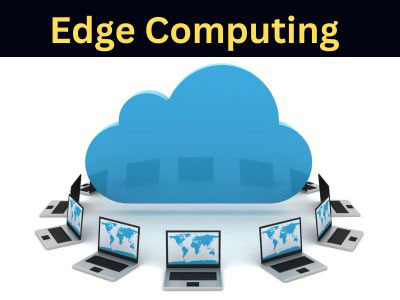What Are The Limitations Of Edge AI?
Key Takeaway
The limitations of Edge AI include hardware constraints that make deploying advanced systems difficult, especially in resource-limited environments. Real-time data processing, while a strength of Edge AI, can become challenging in high-load scenarios, leading to latency issues. Data privacy and security are also significant concerns, as localized processing at the edge increases vulnerability to breaches.
Scalability remains a hurdle, particularly in large-scale deployments where integrating multiple devices and systems can be complex. Moreover, the costs associated with implementing and maintaining advanced Edge AI systems can be prohibitive for many organizations. Addressing these limitations is crucial for realizing the full potential of Edge AI.
Hardware Constraints in Edge AI Deployment
Edge AI relies on specialized hardware to perform computations at the data source, but this dependency creates significant limitations. Unlike cloud systems with access to vast resources, edge devices are often compact and limited in processing power, storage, and energy capacity. These constraints make it challenging to deploy sophisticated AI models that require high computational capabilities.
For instance, running complex neural networks on small IoT devices, such as smart sensors or cameras, can lead to slower performance or overheating. Additionally, edge devices may lack the hardware redundancy found in centralized data centers, increasing the risk of failures. Industries like manufacturing or healthcare, where real-time decision-making is critical, face difficulties in balancing hardware limitations with performance demands.
To mitigate these challenges, hardware manufacturers are developing specialized processors like edge AI chips and accelerators. While these advancements improve efficiency, the need for tailored hardware adds complexity and costs, making large-scale edge AI adoption more demanding.

Challenges in Real-Time Data Processing
One of the promises of edge AI is real-time data processing, but achieving consistent performance remains a hurdle. Edge devices often process vast amounts of data locally, but network variability and hardware limitations can disrupt seamless operations. This is particularly problematic in scenarios like autonomous vehicles or industrial automation, where milliseconds matter.
For example, a smart factory using edge AI to monitor machinery may experience delays during data surges, potentially leading to production inefficiencies. Similarly, in remote areas with unstable connectivity, maintaining real-time performance becomes a challenge. While edge computing minimizes reliance on centralized servers, it doesn’t entirely eliminate latency caused by device overload or resource bottlenecks.
Optimizing algorithms for edge environments and implementing fallback strategies like predictive analytics can help address these challenges. However, ensuring reliable real-time processing across diverse use cases remains a significant technical and operational barrier.
Data Privacy and Security Concerns at the Edge
Edge AI introduces unique data privacy and security challenges, as it processes sensitive information closer to its source. Unlike centralized cloud systems, where data is stored in secure facilities, edge devices are often deployed in less controlled environments, making them vulnerable to tampering and cyberattacks.
For example, an edge AI system in a retail setting may process customer behavior data locally to offer personalized recommendations. If compromised, this data could be misused, leading to breaches of privacy and trust. Similarly, in critical industries like healthcare, compromised edge devices could expose sensitive patient data or disrupt essential services.
To address these concerns, developers are incorporating encryption, secure boot mechanisms, and intrusion detection systems into edge devices. However, these measures increase complexity and cost, especially for large-scale deployments. Balancing the need for robust security with operational efficiency remains a critical challenge for edge AI.
Scalability Issues in Large Deployments
Scaling edge AI solutions across multiple locations and devices presents significant logistical and technical challenges. Unlike cloud systems, where resources can be dynamically allocated, edge deployments require hardware and software to be configured for each individual node. This complexity increases as the number of edge devices grows.
For instance, deploying edge AI in a global supply chain requires integrating diverse devices, networks, and protocols. Ensuring consistent performance and synchronization across all nodes can be daunting. Additionally, managing updates and maintenance for a distributed network of edge devices adds another layer of complexity.
Organizations can overcome some scalability issues by using centralized management platforms and adopting standardized protocols. However, these solutions often require substantial investment in infrastructure and expertise, making scalability a significant limitation for widespread edge AI adoption.
Costs Associated with Advanced Edge AI Systems
The implementation and maintenance of advanced edge AI systems are expensive, often deterring businesses from full-scale adoption. Unlike cloud computing, which leverages shared infrastructure, edge systems require dedicated hardware, tailored software, and ongoing management. These costs can escalate quickly, particularly for industries that rely on real-time analytics and large-scale deployments.
For example, equipping a factory with edge-enabled sensors and AI processors involves high upfront investments in hardware and network infrastructure. Ongoing expenses, such as device maintenance, software updates, and cybersecurity measures, add to the financial burden. For small and medium-sized businesses, these costs may outweigh the perceived benefits of edge AI.
To reduce costs, companies are exploring solutions like edge-as-a-service models and leveraging partnerships with hardware providers. While these strategies make edge AI more accessible, achieving a balance between cost and performance remains a significant challenge for many organizations.
Conclusion
Edge AI holds immense potential, but its adoption is hindered by hardware constraints, scalability challenges, data security concerns, and high costs. Overcoming these limitations requires a combination of innovation, collaboration, and strategic planning. By developing energy-efficient hardware, optimizing AI algorithms for edge environments, and investing in robust security frameworks, industries can unlock the full potential of edge AI. As the technology matures, addressing these hurdles will pave the way for broader adoption, enabling edge AI to drive transformative changes across sectors.

